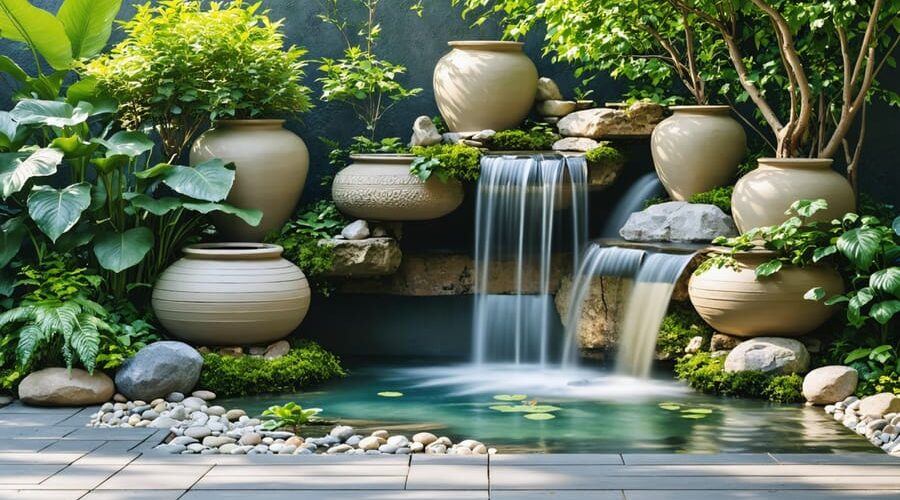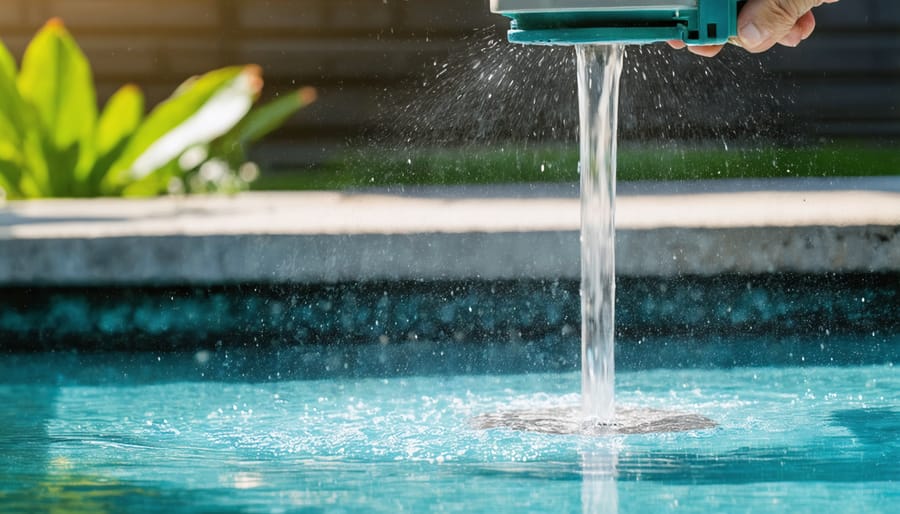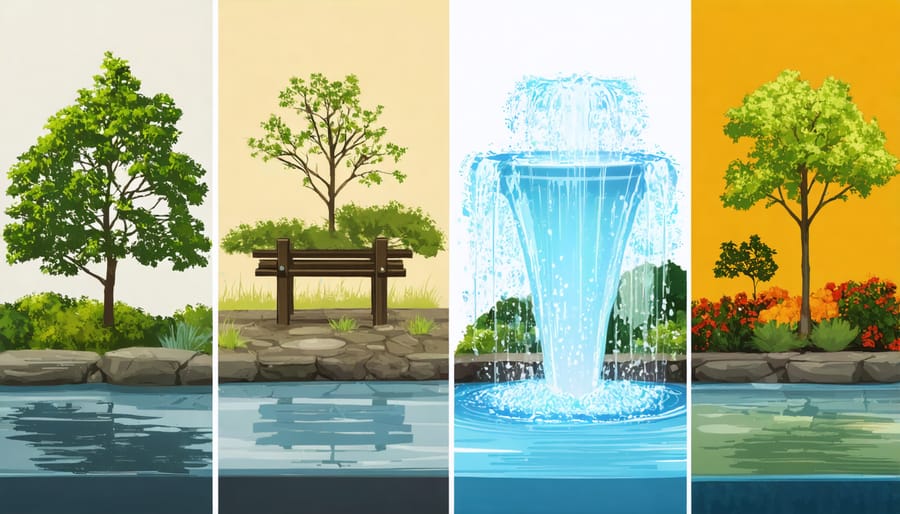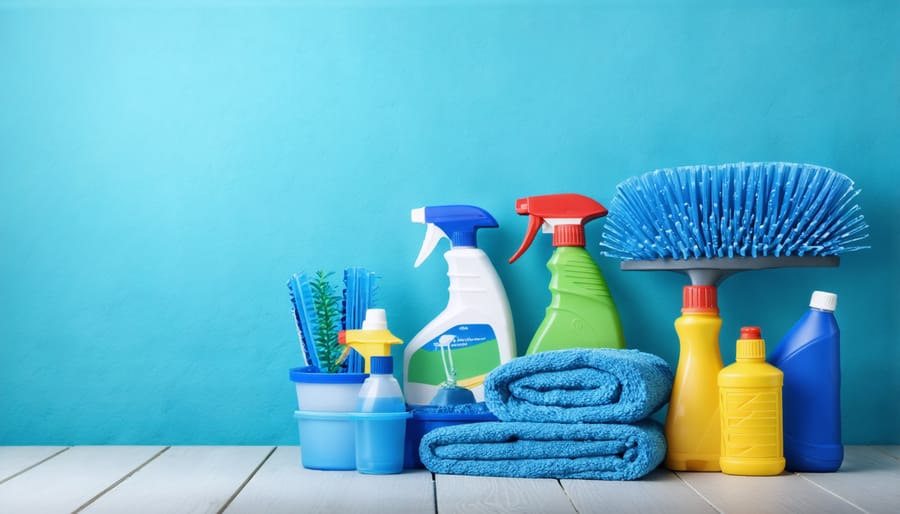
Keep Your DIY Water Feature Beautiful Year-Round (Simple Maintenance Tips)
Transform your backyard into a tranquil oasis by creating stunning DIY water features using readily available materials and basic tools. From repurposed ceramic pots cascading with crystal-clear water to elegant stone fountains that catch the sunlight, outdoor water features add a magical dimension to any garden space. Whether you’re a weekend warrior or an experienced DIY enthusiast, building your own water feature combines creative expression with the soothing sounds of flowing water. This guide walks you through selecting the perfect location, choosing materials that withstand the elements, and installing a circulation system that ensures your water feature runs efficiently for years to come. Best of all, these projects can be completed in a single weekend, making them perfect for transforming your outdoor space without breaking the bank or requiring professional expertise.
Essential Weekly Maintenance Tasks
Water Level Management
Maintaining proper water levels in your outdoor water feature is crucial for both aesthetics and functionality. A good rule of thumb is to check water levels at least twice a week during warm months and weekly during cooler seasons. Keep the water level about 1-2 inches below the feature’s rim to prevent overflow while ensuring enough water for proper circulation.
Consider installing an auto-fill valve system, which automatically adds water when levels drop too low. This convenient solution is especially helpful during hot summer months when evaporation is highest. If you prefer manual monitoring, simply use a garden hose to top off the water as needed.
To minimize evaporation, consider adding floating plants or installing the feature in a partially shaded area. During extreme heat, you might need to add water daily. In winter, maintain slightly lower water levels to account for rain and prevent overflow.
When adding water, always use a water conditioner to neutralize chlorine and other harmful chemicals that could affect your feature’s pump or any aquatic plants. Keep a logbook to track water addition patterns, helping you anticipate future needs based on weather conditions and seasons.
Debris Removal and Cleaning
Regular cleaning is essential to keep your outdoor water feature looking its best. Start by skimming the surface with a net to remove floating leaves and debris at least once a week. For stubborn dirt and sediment, use a small pond vacuum or careful hand-scooping with a container. Installing a mesh cover or strategically placing decorative rocks can help minimize falling leaves and debris.
To prevent algae growth, maintain proper water circulation and consider adding aquatic plants that compete with algae for nutrients. If you notice green buildup, gently scrub surfaces with a soft brush and clean water. For tougher algae problems, use a natural enzyme cleaner specifically designed for water features.
During seasonal cleanings, drain the feature completely and remove any accumulated sludge from the bottom. Clean the pump and filter according to manufacturer instructions, typically by disassembling and rinsing components in clean water. Check for and remove any mineral deposits on rocks or decorative elements using a mixture of white vinegar and water.
Remember to refill with fresh water and treat it with a water conditioner to protect your pump and maintain water quality.
Pump Care and Monitoring
Regular pump maintenance is crucial for keeping your water feature running smoothly. Check your pump weekly for any debris or blockages that might affect water flow. Listen for unusual noises and observe the water flow pattern – any changes could indicate a problem. Clean the pump filter monthly by gently removing it and rinsing with clean water. For illuminated water features, ensure the pump isn’t straining against clogged lights or decorative elements. During winter months, either run the pump continuously to prevent freezing or remove and store it indoors. Keep the water level consistent, as running the pump dry can cause permanent damage. If you notice reduced flow, first check the intake for leaves or debris before assuming pump failure.


Seasonal Care Requirements
Spring Startup
When spring arrives, it’s time to wake up your outdoor water feature from its winter slumber. Start by carefully removing any protective covers and inspecting for winter damage. Clean out debris, leaves, and any algae buildup that may have accumulated during the cold months.
Next, check all pump connections and electrical components for signs of wear or damage. If you stored your pump indoors, reinstall it following the manufacturer’s guidelines. Before adding fresh water, thoroughly clean the basin and all decorative elements with a gentle mixture of water and white vinegar.
For wildlife-friendly water features, add beneficial bacteria to help establish a healthy ecosystem. Fill the feature with fresh water and run the pump for several minutes to ensure proper circulation. Listen for any unusual sounds and watch for leaks.
Finally, adjust water flow rates and check that all spillways or fountainheads are properly aligned. Add any water treatments needed for your specific feature type, and trim back any surrounding plants that may have overgrown during winter. Regular monitoring during the first week of operation will help ensure your water feature transitions smoothly into the spring season.
Summer Heat Management
Summer’s intense heat can pose challenges for your outdoor water feature, but with proper management, you can maintain crystal-clear water throughout the season. Start by checking water levels daily, as evaporation increases during hot weather. Top up your feature when needed, but avoid doing this during peak sun hours to prevent shock to any aquatic plants or fish.
Keep an eye on algae growth, which thrives in warm temperatures. Consider adding floating plants like water lilies or water lettuce to provide natural shade and reduce water temperature. These plants also compete with algae for nutrients, helping maintain better water quality.
Installing a small fountain or waterfall attachment can help aerate the water and keep it moving, which discourages mosquito breeding and maintains oxygen levels. During extreme heat waves, you might want to run your feature during cooler hours (morning and evening) to minimize evaporation while still enjoying the benefits.
If you notice the water becoming cloudy, test the pH levels and adjust as needed. A proper balance between 6.8 and 7.2 is ideal for most water features. Remember to clean filters more frequently during summer months, as debris tends to accumulate faster in warmer weather.
Fall Preparation
As autumn approaches, falling leaves can pose a challenge for your outdoor water feature. Install a fine mesh net over your water feature to catch leaves before they sink and decompose. This simple step saves you time and prevents pump clogs and water quality issues. Check and empty the net regularly during peak fall season.
Consider trimming back nearby plants and trees to minimize debris. If your water feature includes a pump, clean it thoroughly and check for any wear and tear. For areas with freezing winters, decide whether you’ll run your feature year-round or winterize it. If winterizing, drain the system completely, clean all components, and store the pump indoors.
For features you’ll keep running, install a de-icer to prevent freeze damage and ensure proper water circulation. Adding cold-weather beneficial bacteria helps maintain water quality as temperatures drop. Remember to remove any delicate plants and store them appropriately for winter protection. These preparation steps will help preserve your water feature and make spring startup much easier.
Winter Protection
When winter approaches, it’s crucial to protect your outdoor water feature from freeze damage. For areas that experience freezing temperatures, start by removing the pump and storing it in a frost-free location. Drain the feature completely to prevent water from freezing and expanding, which could crack your containers or pipes.
If you have a smaller feature, consider bringing it indoors for winter storage. For larger installations, invest in a good-quality cover that allows for ventilation while keeping out debris. Some gardeners use floating pond heaters or de-icers to maintain a small hole in the ice, preventing pressure buildup in larger features that can’t be fully drained.
Don’t forget to clean and store any decorative elements like floating ornaments or lights. For stone features, apply a winter sealant to prevent moisture absorption and subsequent cracking. If you live in a milder climate, you might only need to reduce the water flow and ensure the pump doesn’t run dry if water evaporates.
Come spring, you’ll thank yourself for taking these preventive measures when your water feature starts up smoothly again.
Troubleshooting Common Issues
Water Quality Problems
Even the most well-maintained water features can encounter issues from time to time. Cloudy water is often caused by debris, excess nutrients, or insufficient filtration. To combat this, regularly clean your pump and filter, remove fallen leaves, and consider adding beneficial bacteria to help break down organic matter.
Algae growth is another common challenge, especially in sunny locations. While some algae is natural, excessive growth can turn your peaceful water feature into a green mess. Installing a UV clarifier can help control algae, as can adding aquatic plants that compete with algae for nutrients. Keeping your water feature partially shaded and maintaining proper water circulation also helps prevent algae overgrowth.
Mineral buildup, particularly in areas with hard water, can leave unsightly white deposits on your water feature. These calcium deposits not only look unappealing but can also damage your pump over time. Regular cleaning with a mixture of white vinegar and water can help dissolve these deposits. For stubborn buildup, use a pumice stone or specialized calcium remover, being careful not to scratch decorative surfaces.
Prevention is key to maintaining crystal-clear water. Test your water regularly, maintain proper chemical balance if using treatments, and clean your feature consistently. If problems persist, consider installing a pre-filter or upgrading your filtration system to better handle your water feature’s specific needs.
Pump and Flow Issues
Is your water feature sputtering or not flowing smoothly? Don’t worry – these common pump issues are usually easy to fix. First, check if your pump is fully submerged, as running dry can cause irregular flow. Clean the pump intake regularly to remove debris and buildup that might be restricting water flow. A quick rinse with a garden hose often does the trick.
If water flow seems weak, inspect the tubing for kinks or pinched areas. Sometimes simply repositioning the tubes can restore proper flow. Also check for calcium deposits or algae growth inside the tubes, which can be cleared with a pipe brush or vinegar solution.
When dealing with inconsistent water levels, look for leaks around joints and seals. Apply waterproof sealant to any suspicious areas. Remember that evaporation is normal, especially in hot weather, so you’ll need to top up water regularly.
For persistent issues, try adjusting the pump’s flow control valve if it has one. Sometimes finding the right balance between power and flow rate is all you need for that perfect peaceful splash.
Structural Maintenance
Regular maintenance is crucial for keeping your outdoor water feature looking beautiful and functioning properly. Start by checking for leaks every few months – look for water loss, damp spots around the base, or unusual water level drops. If you spot a leak, drain the feature and inspect the liner or container for holes or cracks. Small leaks can often be patched with waterproof sealant, while larger damage may require liner replacement.
Keep pump components clean and debris-free for optimal performance. Regular garden waterfall maintenance should include cleaning the pump filter and checking for any blockages. If you notice reduced water flow, disassemble the pump according to manufacturer instructions and gently clean all parts with a soft brush.
Check all connections and tubing for signs of wear or damage. Replace cracked tubes and tighten loose fittings to prevent water loss. Don’t forget to inspect decorative elements like rocks or statuary for stability – shifting pieces can damage your feature’s structure or create unwanted splashing. Address any issues promptly to prevent more serious problems from developing.
Essential Tools and Supplies
Before starting your DIY water feature project, gather these essential tools and supplies to ensure smooth installation and maintenance:
Basic Tools:
– Shovel and spade for excavation
– Level for ensuring proper water flow
– Utility knife for cutting liner material
– Tape measure for accurate sizing
– Garden hose for layout planning
– Wheelbarrow for moving materials
Construction Materials:
– Pond liner (EPDM rubber recommended)
– Underlayment fabric to protect the liner
– PVC pipes and fittings
– Submersible pump (sized for your feature)
– River rocks and decorative stones
– Water feature basin or reservoir
– Flexible tubing
Safety Equipment:
– Work gloves
– Safety glasses
– Steel-toed boots
– Dust mask for concrete work
Maintenance Supplies:
– Water testing kit
– Algae treatment products
– Filter media
– Pond vacuum (optional)
– Net for debris removal
– Water conditioning chemicals
Power Tools (Optional):
– Cordless drill
– Concrete mixer
– Electric saw for cutting stone
Keep these supplies organized in a dedicated storage area, protected from weather elements. For larger projects, consider renting specialized equipment rather than purchasing. Remember to check all electrical tools are rated for outdoor use and equipped with GFCI protection for safety around water.

Maintaining your DIY water feature doesn’t have to be a daunting task. By following a regular maintenance schedule and addressing issues promptly, you can enjoy your peaceful water garden for years to come. Remember to check water levels weekly, clean filters monthly, and inspect pumps seasonally. Keep an eye on plant growth and remove debris before it becomes problematic.
Winter preparation is crucial for protecting your investment, so don’t skip those end-of-season tasks. Always keep spare pump parts and water treatment supplies on hand for quick fixes when needed. If you notice any unusual changes in water flow or clarity, address them immediately to prevent larger problems from developing.
The effort you put into maintaining your water feature will be rewarded with the soothing sounds of flowing water and the beauty it adds to your outdoor space. Make maintenance a part of your regular garden routine, and you’ll find it becomes second nature. Your water feature isn’t just a garden element – it’s a living system that thrives with consistent care and attention.
Remember, a well-maintained water feature isn’t just more beautiful – it’s also more efficient and cost-effective in the long run. Happy gardening!
